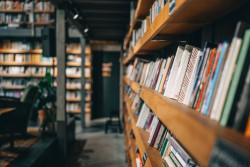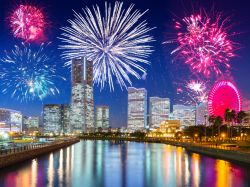
November 17, 2024
LOVEHO SELECTS Featured Artist: Lee He-Yi
Featured artist of November 2024
Since its birth in 2018, Tokyo Love Hotels has showcased and provided a platform for over 300 local and international artists, exhibitions, pop-ups and performance acts. In collaboration with Metropolis, Tokyo Love Hotels cherry-picks one talent each month to be featured as LOVEHO SELECTS, showcasing artists and small businesses to readers and culture enthusiasts alike.
Tokyo Love Hotels is an art event organization based in Tokyo, Japan, that gathers local and international talents of all ranges to share a night of art, music, experiences and love with the community. They support artists by providing space for them to perform, promote, network, sell and exhibit their work; free of charge and commission.
LOVEHO SELECTS Featured Artist: Lee He-Yi


Official Biography:
In today’s increasingly convenient society, people produce a large amount of waste simply by living their daily lives. As a creator, Lee He-Yi rather than seeking industrially manufactured art materials, he prefers to use discarded materials that encounter from surroundings as resources for his work. This idea is rooted in the philosophy of the “Mingei movement,” which emphasizes using readily available materials to create pieces based on personal life experiences. Living in a modern consumerist society, we are surrounded by waste from daily life. Each person’s lifestyle results in different types of waste, Lee He-Yi believes that using these materials in art can express a more personal identity. Lee He-Yi primarily uses discarded paper products, such as corrugated cardboard. He create representations of people, animals and fantastical creatures using these paper materials through the *kanshitsu* (dry lacquer) technique, a method for making Buddhist statues that originated in China and was introduced to Japan in the 7th century.
What got you into making art in the first place?
Due to my father’s work, I left my birthplace at the age of five and moved around different cities in China. I was born in the 1990s, back then I spent most of my elementary and middle school years in a small northern Chinese city, the atmosphere of socialist nationalist education in schools was quite rigid. My understanding of being Chinese was almost entirely shaped by patriotic education. At that time, I felt proud being Chinese because of what I have learned about the glory of ancient Chinese civilization.
After graduating from middle school, I went to study in Australia alone. Living in a society with perspectives vastly different from those in China profoundly challenged my understanding of identity. Studying world history in Australia, I experienced for the first time what it was like to view China from a non-Chinese perspective. Which led me to question what I had learned about my Chinese identity from textbooks.
After graduating from university, I have been living in Japan for 11 years. I felt that Japanese culture shared many similarities with Chinese culture, the customs have a lot of in comments between those two countries, but at the same time I experienced a certain sense of dissonance. This led me to wonder: what is my true sense of identity? I began to explore my roots, and art is my tool to do it.
What has inspired your current style and choices of medium?
The most profound influence on my creative work has been the Mingei (folk craft) movement, which emerged in Japan in the early 20th century. The Mingei movement specifically focuses on discovering the art of ordinary people. Much of my inspiration also comes from primitive sculptures, such as ancient Chinese, ancient Mexican, African and Inuit art. Today consumerism is an essential component of capitalism, and the overproduction that arises with its development not only causes issues such as environmental pollution and global warming but also leads to the loss of cultural identity through the mass production of goods to meet market demands. The founder of the Mingei movement, Yanagi Muneyoshi believed that primitive people and children, are close to a state of “natural humans,” are ideal creators. However, this does not mean we should return to a primitive state; rather, it suggests using knowledge and thought to bring spiritual pursuits closer to a “natural human” state.
One reason I chose to use the dry lacquer technique in my work is its connection to my own “roots.” The earliest known examples of “dry lacquer sculptures” can be traced back to the Han Dynasty in China. The most exquisitely preserved dry lacquer Buddha statues today were crafted in the region where I was born. This technique was introduced to Japan and widely used in making Buddha statues. Inspired by the Mingei (folk craft) movement, I substitute waste paper collected from daily life for the traditional materials used in dry lacquer techniques for my sculptures.

Your pieces have quite the impact considering both their appearances and sizes. What do you see them invoke within the viewer?
The general idea is to preserve an artwork as close as possible to its original form when it was “brand new” as when completed by the artist. By maintaining the work in its original state, the artist’s initial intentions can be conveyed to future viewers. However, in the aesthetics of Mingei, the influence of “other forces” is seen as an important element. This “other forces” includes the effects of chance in the creative process, traces and marks left by the user over time, aging and weathering of materials, oxidation and other signs of time. Therefore, for my works I want to touch, to hold, to break (unintentionally) my works. This aesthetic sensibility can be seen as an extension of my appreciation for antiques.

Please pick one of your pieces and give us a detailed description about it.
The work “Human Settlement” aims to express the feeling of individual loneliness within a collective, reflecting the nature of humans as social animals. In human society, when addressing personal issues, one must not only confront oneself but also face the expectations and judgments of those around them. At the same time, individuals within a group are emotionally, economically and socially supported by other members. Living in society, individuals encounter various mental states. Buddhism uses the term bonno, which refers to mental states clouded by anxieties, fears, anger, jealousy, desires and depression, leading to unhealthy actions.
Having been born in China, the most populous country on Earth, lived in Australia, the country with the lowest population density, and later moving to Tokyo, one of the largest metropolitan areas in the world, I’ve experienced that regardless of the surrounding environment or population density, a sense of loneliness is ever-present, even in the world’s largest cities.
What do you want for the future of your artistic career?
For me, I don’t wish to consider being an “artist” as a job or life plan. I hope I can focus on how to express my understanding of the “present” through art.
Planning the future for me is a kind of suffering. I consider this feeling one of the bonno. In Buddhism, there are three “times” or “worlds”: past, present and future. The cause of bonno, in a sense, may lie in focusing too much on the “future” rather than the “present.” This piece is conceptually designed to represent the “present” within the flow of events as one strives to fulfill desires and expectations in modern society.
Do you have a brief personal message for our readers?
“I hope that readers can grasp more about creators through this platform, not just by focusing on their works but also by being inspired through understanding the experiences and thoughts behind their creations.”
Instagram:







